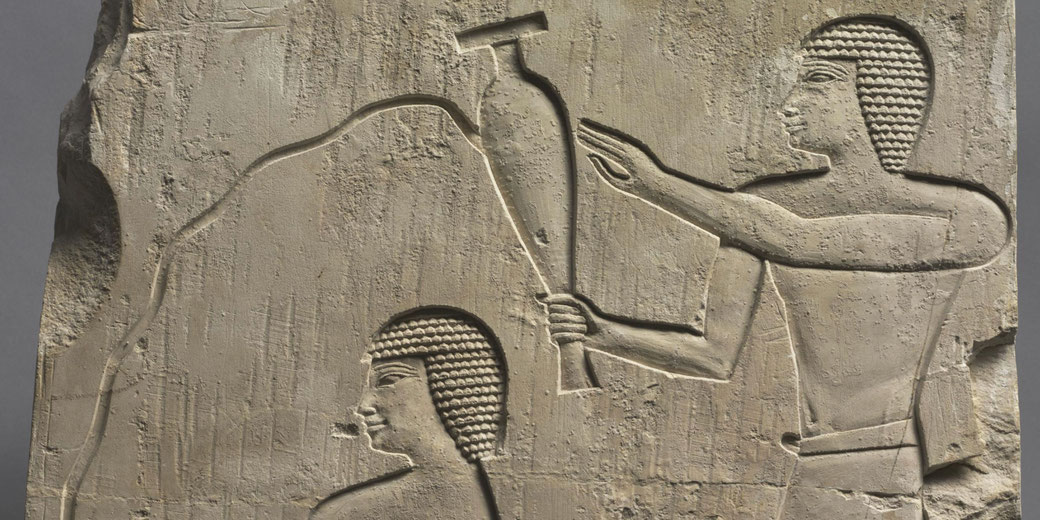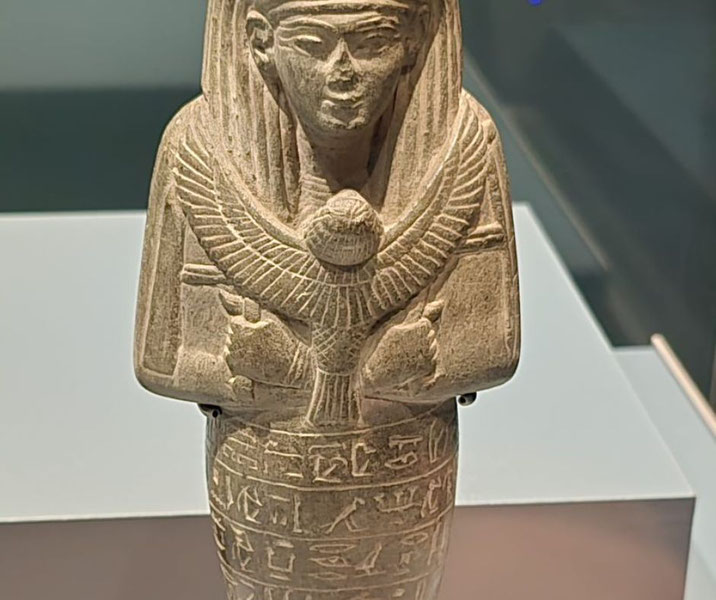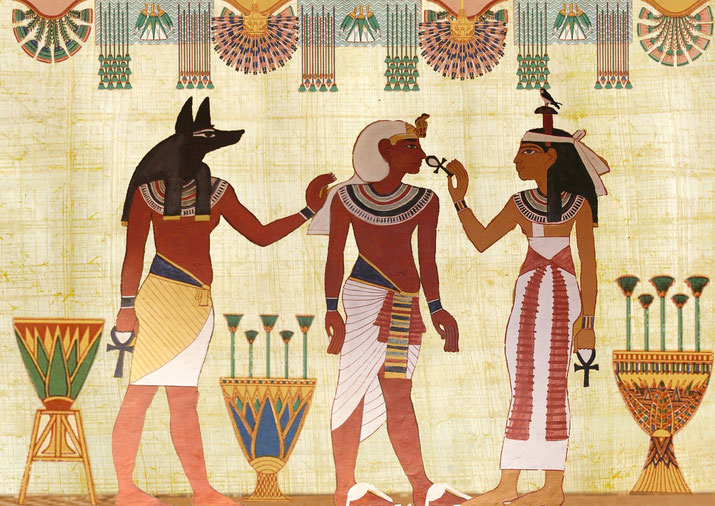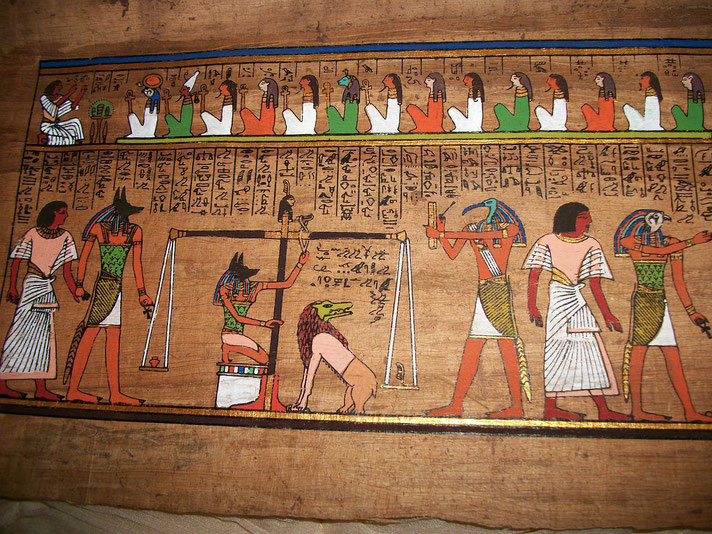What did ancient Egyptians believe about the afterlife?

When most people think about ancient Egypt, they picture great pyramids, hidden tombs, mysterious mummies, and strange-looking gods.
It seems that what most people associate with the Egyptians is their beliefs about death and what happens afterwards.
However, you may not be surprised to learn that the ancient Egyptians had a very complex belief system about the afterlife.
What may be surprising, though, is that these beliefs did not stay the same over time. In fact, they were in a constant state of adaptation throughout the 3000-year history of the Egyptian culture.
Life before death
What Egyptians thought about life after death was primarily based upon how they lived their lives on earth.
In fact, in many tomb paintings and written descriptions, it seems that they thought that the afterlife was a continuation of what regular life was like in the here and now.
For example, ancient Egyptians believed life was governed by many gods and goddesses who controlled everything around them, both the physical and the supernatural world.
The role of people was to worship these gods, offer them sacrifices, and learn to follow the moral rules outlined by the priests of the various gods.
Egyptians from all walks of life, from the pharaoh to the commoners, believed that living a life pleasing to the gods in this world, meant a better chance of being rewarded in the afterlife.
This meant that life was full of ritual and ceremony. Every day, priests would bring offerings of food, drink, ointments and clothing to the divine beings and would say daily prayers.
Egyptians had an understanding of harmony and balance and that their actions impacted not only themselves, but the world around them both now and into the future.
Not all their thoughts focused on the afterlife however. Egyptians enjoyed their earthly life as well and participated in festivals, feasts and recreation activities like sports.
Hockey, handball, archery, swimming, tug of war, gymnastics, rowing, and a sport known as "water jousting" were all popular activities in ancient Egypt and appear in artwork depicting everyday life.
Obsession with death
Since most of the architecture and art that survives from ancient Egypt is related to burials and temples, it seems to us that the ancient Egyptians were obsessed with death, but not in a morbid way.
They believed that it was a necessary part of the circle of life and that everyone had to go through it.
However, in the Egyptian mind, life did not cease at the moment of death. They believed that eternal spiritual forces within the body kept on living, even if the physical body did not.
Although, it didn’t mean that they thought the body was irrelevant.
The Egyptians believed that everyone was made up of three main parts – their physical body, their ba and their ka.
The ba and the ka were both spiritual elements that lived inside of people.
However, it is not immediately clear to us what the difference between the two elements are, as no surviving Egyptian text describes them in any detail.
As a result, modern Egyptologists are left to draw some educated guesses about them based upon how these words are used in ancient Egyptian writing.
As far as we can tell, the Egyptians believed once their body died, they could still live on through their ka.
The ka appears to have been something like a ‘soul’ or 'life force'. The ka would leave their body once they died and go to the underworld.
On the other hand, the ba was someone’s personality and is what made them unique.
It was often portrayed like a bird with a human head and was thought to be able to fly between the living world and the afterlife.
For a successful afterlife, the person’s ba and ka needed to be reunited. However, the only way they could survive was to be reunited in the dead person’s body.
This is why the deceased person’s body needed to be preserved in a lifelike way to ensure it could still house the ba and ka.
This is why mummification was so important because if the body was destroyed, the soul or spirit may be lost.

The world of the afterlife
According to the ancient Egyptians, after a person died, their spirit would enter into the underworld called the Duat.
This was a dark and dangerous place where they would have to face many challenges.
If they were able to overcome these challenges, they would be rewarded with eternal life in the afterlife.
The god Anubis, often depicted with the black head of a jackal, played an important role in helping to guide the person through the challenges.
Anubis and other gods would help the person to battle strange creatures and pass by gatekeepers to reach a location called the ‘Hall of Truth’.
The deceased would be buried with scrolls called the Book of the Dead, which would include prayers and instructions for passing the trials of the underworld.
The journey to the afterlife was not an easy one, but it was possible for everyone to make it if they had the help of the gods and goddesses.
With their guidance, anyone could overcome the challenges and enter into eternal life.

Hall of Truth
Once they had entered the underworld and successfully completed the various challenges, Egyptians believed that they would meet the god Osiris, the god of the afterlife, in the Hall of Truth.
In order to pass this final judgment successfully, the dead person had to speak 'negative confessions'.
These were a list of about forty-two crimes that they had not committed while alive.
Once the confessions were made, the person’s heart was weighed against a feather from Ma’at, the goddess of truth and justice.
If their heart was lighter than the feather, meaning that the deceased had lived a virtuous life, they would be allowed to enter into eternal life in the Field of Reeds.
However, if their heart was heavier than the feather due to the sins committed in their life, they would be eaten by a beast called Ammit and would cease to exist.

Field of Reeds
The Field of Reeds was an important part of the Egyptian's beliefs about the afterlife.
The Egyptians believed that the afterlife would be similar to life on earth. They would have houses and families, and they would even be able to enjoy their favourite things from life on Earth such as pets and food. It was a paradise with lush vegetation and an idealised version of life.
The Field of Reeds was often depicted in tomb paintings and funerary texts. In these images, it shows the person walking through fields filled with crops, and hunting animals.
In many ways, the Field of Reeds looks very much like how wealthy landowners lived on earth.
Change over time
While the descriptions provided above outline a fairly standard understanding of Egyptian beliefs, it is important to know that not all elements of their beliefs were like this at every moment throughout ancient Egyptian history.
In fact, there were many changes in the beliefs about the afterlife.
This is most evident in the popularity of different gods. Depending on the time period, some gods and goddesses were more popular than others, and played different roles in the afterlife.
There are a number of different versions of the afterlife story which were more popular at different times in Egyptian history.
At some times Osiris was more important, while at others it was Anubis, Ra, or Amun.
In the Old Kingdom, the key god related to the afterlife was the sun-god Ra. Also, it was only thought that the pharaoh had the opportunity to live eternally, since he was the only one who could afford a pyramid for his burial, which allowed him to follow Ra into the spiritual realm.
For most common people, there does not seem to be an expectation that they would live on after death.
However, in the Middle Kingdom, there was a period of time called the 'democratisation of death'.
This describes the development of the idea that everyone, regardless of social status, could have a good afterlife if they followed the proper rituals.
This change in belief may have been due to the increase in literacy during this period.
This allowed more people to read and understand the funerary texts that were needed for a successful journey to the afterlife.
It was also more affordable for people to access the texts, making them more accessible.
Another element that changed over time was the use of shabti dolls. Shabtis were dolls that were buried with the deceased in order to help them in the afterlife.
These dolls were meant to represent the servants a person would need in the afterlife in order to look after the deceased person: including butlers, cooks, gardeners, and even beer-makers.
These dolls were expensive to make in the early part of Egyptian history and seemed to have been used by people who had many servants in this life.
They first appear during the Middle Kingdom, but their use became more widespread in the New Kingdom.
As they became cheaper to make, many people were buried with dozens of them.
Why religion mattered to the Egyptians
As you can now see, ancient Egyptian beliefs about the afterlife were very complex, but they offer us a fascinating insight into the way that they saw life and death.
It is clear that they believed that death was a natural part of life and that everyone had to go through it.
Since they believed that the afterlife was a real and tangible place, it helped them to prepare for their own death and gave them comfort in times of grief.
It also allowed them to develop elaborate funerary rituals and texts that would help them on their journey to the afterlife.
These beliefs changed over time, but always remained an important part of Egyptian culture.
In many ways, their anxieties and expectations about death do not differ much from our own.

Further reading
What do you need help with?
Download ready-to-use digital learning resources
Copyright © History Skills 2014-2025.
Contact via email
With the exception of links to external sites, some historical sources and extracts from specific publications, all content on this website is copyrighted by History Skills. This content may not be copied, republished or redistributed without written permission from the website creator. Please use the Contact page to obtain relevant permission.





